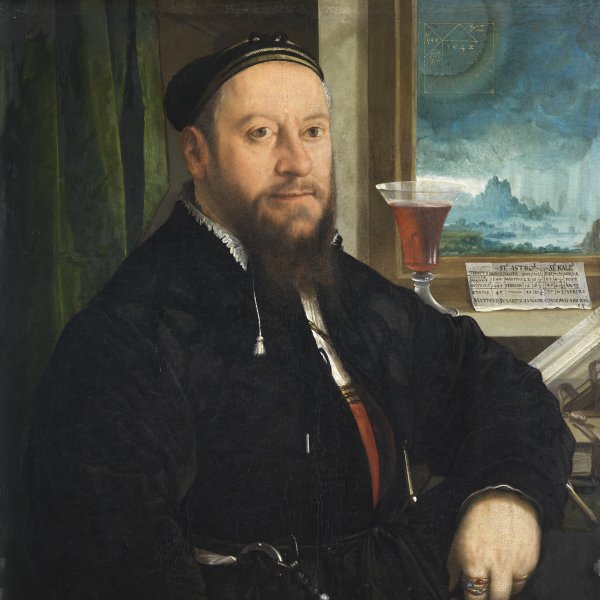Christoph Amberger
(?), ca. 1505-Augsburg, 1561/62
Neither the date nor place of birth of Christoph Amberger is known. He probably trained in Augsburg in the workshop of Leonhard Beck and married Beck’s daughter Barbara. Between approximately 1525 and 1527 Amberger may have made a study trip to the north of Italy, which profoundly influenced his style. By 1530 he was an independent painter but arely signed his works. According to Sandrart, during the Imperial Diet of 1530, held in Augsburg, Amberger painted a portrait of Charles V that pleased the monarch. It has been suggested that this is the Portrait of Charles V in the Gemäldegalerie in Berlin, but that work is dated 1532. Amberger also worked for Ferdinand of Austria, the Emperor’s brother, for whom he designed ten, full-length, bronze sculptures for the tomb of Maximilian I in Innsbruck. Over the following decades Amberger became highly appreciated by the wealthiest families in Augsburg, particularly the Fugger, from whom he received numerous commissions. His portraits reveal his skills in that genre and also reflect the prosperous condition of the patrician classes of Augsburg, who liked to be depicted in the Italian style. One of the best examples of such works is the Portrait of Sebastian Münster (Gemäldegalerie, Berlin). Aside from portraits, Amberger also executed religious works such as The Virgin and Saints for Augsburg cathedral (still in situ) and was commissioned to replace the Corpus Christi by Hans Holbein the Elder, destroyed during the iconoclastic uprisings of 1538. None of the monumental painted façade that he executed in Augsburg has survived although there are preparatory drawings for these projects. Amberger also executed miniatures such as those for Matthäus Schwarz’s Trachtenbuch, as well as various series of prints.




